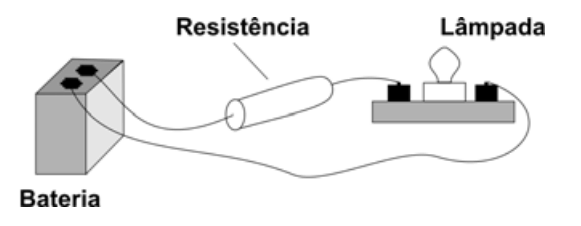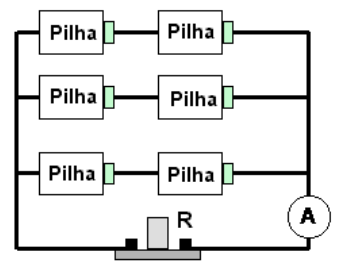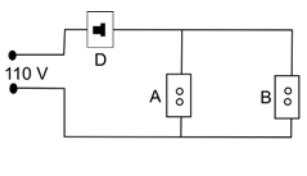Physics > Electricity > Exercises - Problems - Electrodynamics - ANSWERS
revise theory>>
.
1)

Calculate current and resistance in the lamp:
Using the power formula on the lamp:
2,25 = 4,5 I
I = 0,5 A
V=RI => R = V/I = 9 Ω
Calculate resistance added to the circuit:
We want a current of 0,5A flowing in the circuit, because that is what is suitable for the lamp.
So the total resistance (Rt)of the circuit must be:
V = I => 12 = Rt *0.5
Rt = 24 Ω
Because there is the lamp which acts as a resistance of 9 Ω, the added resistance must b Rt - 9 = 15 Ω
answer: d)
2)

Because the batteries are connected in series (pairs) and in parallel (3 sets of pairs of batteries), the total voltage between the terminals of the gadget is that of a pair of batteries. So:
V=RI => 2V = RI => I = 2V/R
answer: b)
3)

dishwasher: 110 V, 1400 W
microwaves oven: 110V , 920 W
A and B are connected in parallel, and each of these parts of the circuits have differnt currents. The current at D is the sum of the currents at A and B.
Those can be easily calculated using the power formula:
P = VI
dishwasher: 1400 = 110* I => I = 12.7 A
oven: I = 920/110 = 8.3 A
Total current= 21.2 A so that answers is d)
The Joule effect heats the wire when an electric current flows. The power lost by heat is given by P = RI2 .
The power to be transmitted is the same as well as the resistance, because the wire is the same. So what varies is only V and I.
The current is P/U, so that the larger the voltage the smaller the current . That is the point of having such high voltages in transmission lines and the costs of buying transformers
Because the heat lost is proportional to the square of the current, the ratio of power losses will be:
(P2/7502) / (P2/302) = 625
answer b)
.
